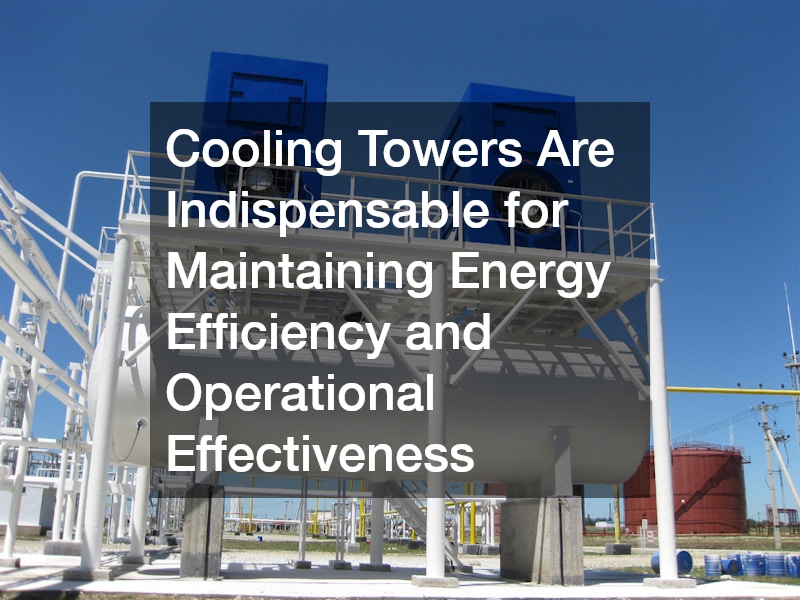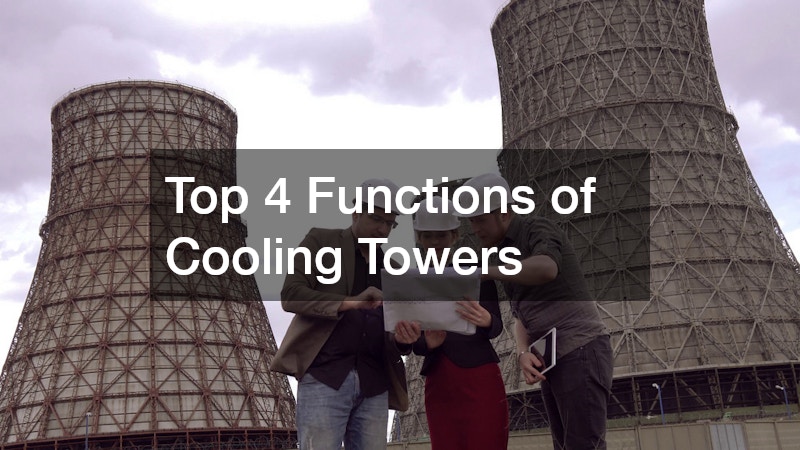Cooling towers are pivotal in the realm of commercial HVAC systems, serving as vital components for heat removal. In industrial and commercial applications, they aid significantly in cooling processes, ensuring the operational efficacy of HVAC systems.
Whether in manufacturing plants or skyscraper service centers, cooling towers are the unsung heroes that regulate temperatures and maintain system efficiency. Understanding their functions offers deeper insights into their industrial importance and energy-saving capabilities.
For a commercial HVAC company in Los Angeles, CA, employing efficient cooling systems can make all the difference amidst the city’s high energy demands. Let’s explore the key roles cooling towers play in the HVAC world, highlighting their functions, working principles, types, and maintenance needs.
What is the Role of Cooling Towers in HVAC Systems?
Efficient Temperature Regulation
Cooling towers support efficient temperature regulation by effectively dissipating excess heat from HVAC systems. This not only ensures optimal operating conditions but also extends the life of the HVAC components. In commercial HVAC setups, maintaining optimal temperature is crucial for the smooth functioning of chillers and compressors. By regulating temperature, cooling towers help prevent unnecessary strains on these systems.
Given the scale of operations in urban settings like Los Angeles, CA, this efficient regulation is indispensable for commercial buildings. HVAC companies rely on this to maintain seamless operations and reduce the risk of costly equipment failures.
Reduction in Energy Consumption
Cooling towers contribute significantly to reducing energy consumption by lowering the thermal load on HVAC systems. This results in reduced operational costs and a smaller carbon footprint for commercial properties. The energy savings achieved through the use of cooling towers are notable, especially in dense urban areas where energy demands are high. This reduction is invaluable for HVAC companies striving to offer sustainable and cost-effective solutions.
For a commercial HVAC company in Los Angeles, CA, the adoption of energy-efficient cooling systems can provide a competitive advantage. This not only aligns with environmental regulations but also enhances the brand’s reputation for sustainability.
How Do Cooling Towers Work to Remove Waste Heat?
Evaporation Process
The core mechanism of many cooling towers is the evaporation process, where water absorbs heat from the system and evaporates, leaving the remaining water cooler. This fundamental principle of heat exchange underpins the cooling performance in commercial HVAC installations. Evaporation is efficient because a large amount of heat can be removed with a relatively small amount of water. This is especially important for systems operating in warm climates like Los Angeles, California.
The commercial HVAC company in Los Angeles, CA, ensures that their towers are optimized for maximum evaporation efficiency. They understand that effective heat exchange is crucial for maintaining both performance and energy efficiency.
Heat Dissipation
Cooling towers facilitate heat dissipation by transferring the absorbed heat from industrial processes to the atmosphere. The process involves cooling the water through evaporation and convection, allowing the warm air to escape. Effective heat dissipation is critical in maintaining the cooling system’s capacity and preventing overheating in machines. This is essential for facilities managed by commercial HVAC companies in Los Angeles, CA, where operational demands are rigorous.
The dissipation process is optimized by incorporating induced or forced-draft fans that increase air flow through the tower. This is a crucial step in ensuring the efficient operation of HVAC systems in large commercial spaces.
What Types of Cooling Towers are Ideal for Commercial Use?
Open Circuit Cooling Towers
Open circuit cooling towers are popular for their simplicity and efficiency in cooling large volumes of water. They offer a direct contact method wherein water cascades over fill materials, exposing it to air to dissipate heat. These towers are advantageous in applications where water purity is not a primary concern. They are favored by commercial HVAC companies in Los Angeles, CA, where bulk cooling is needed without complex system installations.
Despite potential issues like make-up water requirements and water treatment needs, open circuit towers provide considerable economic advantages for many commercial setups. Their continued use underscores their effectiveness in various industries.
Closed Circuit Cooling Towers
Closed circuit cooling towers offer a more controlled cooling solution, especially for environments demanding high hygiene standards or low water makeup. The cooling fluid runs in a closed loop, preventing contamination and minimizing water loss. These towers are ideal for industries requiring precise temperature control and low operating costs. In commercial settings, especially those in Los Angeles, CA, they provide an ideal solution for extensive HVAC management.
Commercial HVAC companies value closed circuit systems for their reliability and efficiency. These towers ensure thermal performance with a lower risk of scale and fouling in the system, which is crucial for long-term maintenance.
What Maintenance is Required for Optimal Performance of Cooling Towers?
Regular Cleaning and Inspection
Routine cleaning and inspection are paramount to prevent scale build-up and biological growth in cooling towers. Neglect can lead to decreased efficiency and higher operational costs. Regular maintenance ensures that cooling towers continue to provide optimal performance and longevity. This is essential for commercial HVAC companies in Los Angeles, CA, to maintain a competitive edge.
Inspections help detect potential faults or inefficiencies before they develop into significant problems. Proactive upkeep is vital for sustaining system performance and reliability.
Cooling towers are indispensable for maintaining energy efficiency and operational effectiveness in commercial HVAC systems. Their roles in temperature regulation, reducing energy consumption, and facilitating waste heat removal underscore their industrial value.
For a commercial HVAC company in Los Angeles, CA, understanding and utilizing these cooling solutions is crucial. Ongoing maintenance is a pivotal factor in maximizing the longevity and efficiency of cooling towers.
As the demand for sustainable energy solutions grows, the significance of cooling towers in commercial applications will only increase. Strategic maintenance and upgrades will ensure these systems meet future needs efficiently.


